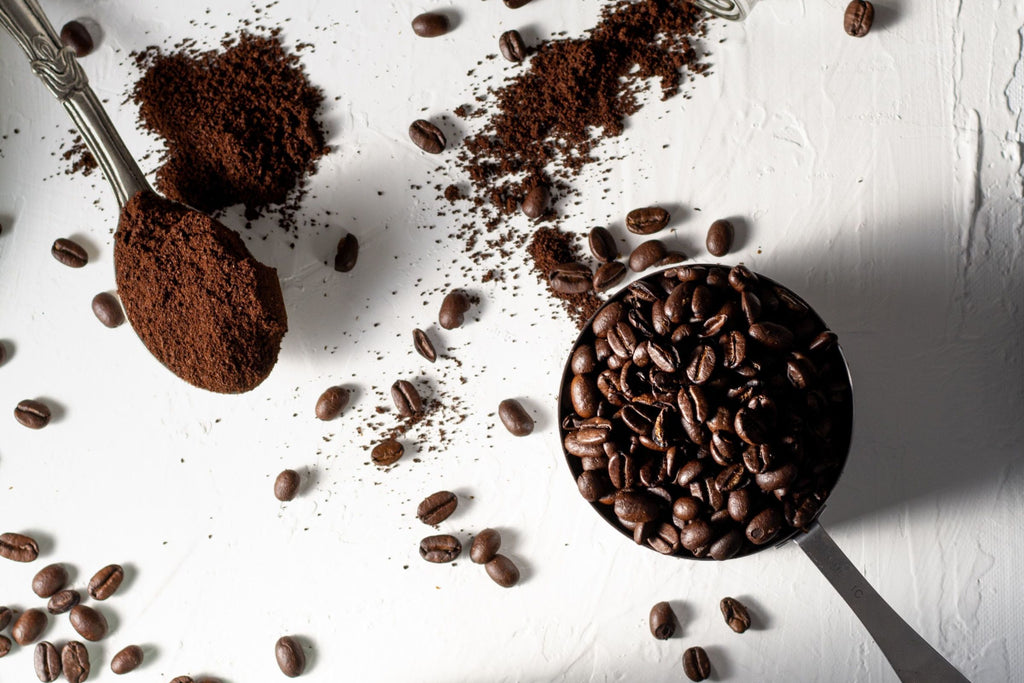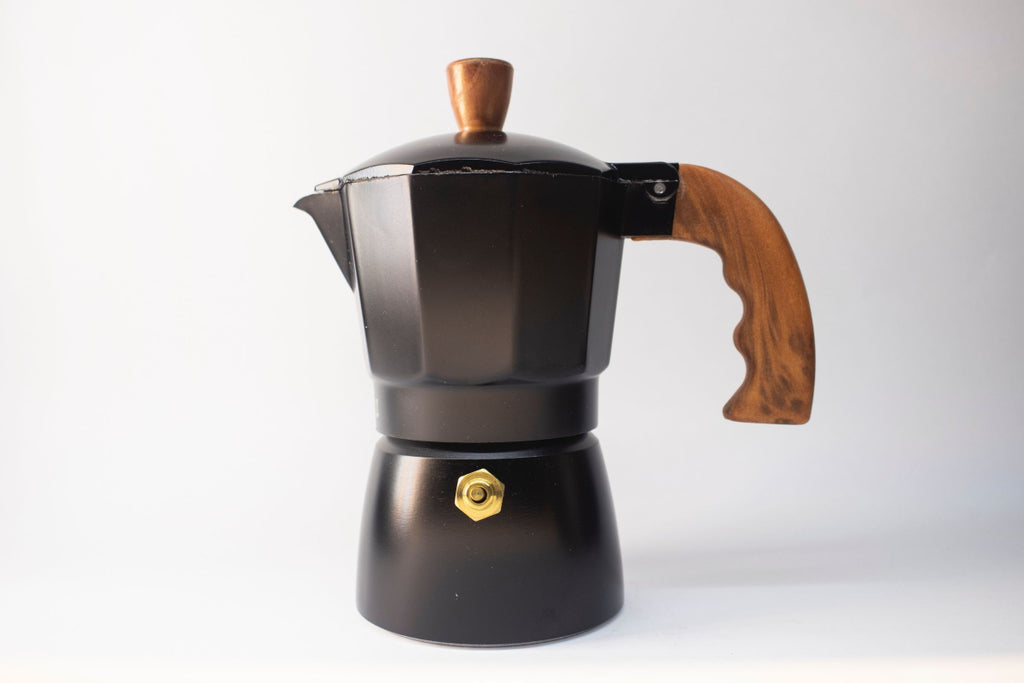You love strong coffee, but an espresso machine is too expensive… So we completely understand your pain! And after trying out all the espresso-like drinks you can make - we have a solution. Yes, you can make a drink almost precisely like espresso on a stove. And you do it in a Moka pot, which is just as Italian as the espresso machine.

How Was the Stovetop Coffee Maker Invented?
The stovetop coffee maker, invented in 1931 by the Italian inventor and engineer Alfonso Bialetti, is also known as a Moka pot. You probably think you've heard that name, and you probably have. The Bialetti Moka pots are still around; they're among the most widely spread worldwide.
In general, espresso and coffee have always been a big part of Italian culture, and it's no surprise that this is where they invented the stovetop espresso maker. However, the critical role of coffee in Italian culture is that it was one of the first European countries to start importing it.
In the 20th century, the world wasn't nearly as globalized as today, but it didn't take long before the Moka pot got to every continent. Spreading around the world wasn’t a problem because Moka pot offers a fast and straightforward way to make a strong, delicious coffee that's arguably as good as espresso but made on a stovetop. The Moka pot is in nearly every Italian home and South American nowadays.
They initially named the Moka pot the Bialetti Moka express because it only took a few minutes to end up with a delicious cup of coffee. Then eventually, it was simply called the Moka pot, and they didn't just pick that name because it sounds good. Mocha was an important port city for the coffee trade routes back in the 15th century when Somali traders started importing coffee from Africa into Asia. The town is in Yemen, where the arabica coffee beans were first cultivated.
The Moka pot is also known as a stovetop espresso maker because of the coffee-making method. Espresso is Italian for pressed out, and this is how you brew Moka pot coffee precisely.
How to Make Stovetop Espresso?

Making coffee in a stovetop espresso maker is straightforward, and you don't need any additional equipment (if you have a stainless steel pot, but we'll look into that later). You start by pouring water into the bottom chamber of the pot. It's best to start with hot water, as while the stove is getting hot and heating, your coffee will begin to roast. If your water is hot from the start, this will be cut short, and you're more likely to have a delicious coffee cup.
Once you've poured in the water, it's time to put the coffee ground in the pot's filter basket. It goes in the middle, and you should make sure you put in the right amount of coffee and don't tamper it. The perfect coffee for your stovetop espresso maker is medium to ground coarsely. If you put in coffee that is too finely ground, you will end up with bland coffee, if any, as the water won't be able to go through them as it should. If it's too coarse, you will also have bland-tasting coffee as the time the water is in contact with the coffee won't be enough.
When you have your water and your coffee in the espresso maker, you can put it on the stove and crank up the heat. In a few minutes, you will have your delicious stovetop coffee.
Here's the step by step recipe that will make it easier to brew your Moka espresso at home:
- Throw a damp towel in the freezer. This is a pro trick that will ensure you don't brew bitter coffee. However, you will also need it to stop the brewing process towards the end.
- Pour hot water into the bottom chamber. As we already mentioned, this is important, so you don't additionally roast your coffee in the pot.
- Put coffee beans in the filter basket and put the pot together.
- Start making coffee by putting the stovetop espresso maker on the hot stove.
- Wait for the gurgling sound. Once you hear it, your coffee is ready, and you should take the pot away from the stove.
- After taking the Moka pot away from the stove, cover it with the towel from the freezer. Doing so will immediately stop the brewing process, so you don't over brew your coffee.
- Add milk or cream if that's how you prefer your coffee.
- Enjoy!
Is Moka Pot Coffee the Same as Espresso?
It is a trick question. While Moka pot coffee is nearly as strong and delicious as espresso, you can’t always consider it proper espresso because espresso is known for the thick crema (foam) layer on top of the brew. And an espresso machine produces that because of the high pressure it generates.
Since the pressure in a Moka pot is less than half that of an espresso machine, the coffee is half as strong as espresso, and there's almost no crema. There's a good reason why you can consider Moka pot coffee espresso, though, and that's the brewing method itself.
You brew coffee in a Moka pot through pressurized water, which presses the brew out of the coffee seeds. Espresso means pressed out in Italian (other than fast), and that's why the stovetop espresso maker is called so.
What Is the Best Type of Stovetop Coffee Maker?

There are three types of stovetop espresso makers: aluminum, stainless steel, and electric.
Aluminum
The original Bialetti Moka pot was made out of aluminum. The reason to choose that metal to make the pot was that it was significantly cheaper and easier to work with than stainless steel. Although it's cheaper, an aluminum Moka pot still has some advantages over a stainless steel one:
- Aluminum is a better heat conductor. Your stovetop espresso maker will heat up and therefore cool down faster. If you want to make consecutive rounds of Moka coffee in your pot, this might actually be a disadvantage.
- Aluminum is lighter. If you're looking to take your Moka pot with you when traveling or camping, that's a fantastic advantage; you will be able to save some weight and more easily enjoy your Moka coffee wherever you are.
- Aluminum is cheaper. Yes, aluminum is still more affordable, but you should know that this lower price has some downsides.
Disadvantages of an aluminum Moka pot:
- You need to season an aluminum Moka pot. When you get it, you will have to make two or three rounds of coffee and throw them away to get the best taste out of your stovetop espresso maker.
- Aluminum lasts less. It's not as tough metal as steel, so it will probably last you fewer years.
- You should be careful when washing it. Don't use any strong detergents as this will ruin the surface of the metal. A quick rinse with warm water is usually enough.
Stainless Steel
Nearly a century has passed since stovetop espresso makers first showed up. According to many, that's more than enough time to make them as great as possible, and stainless steel is the best you can get. Its main advantages are:
- Stainless steel Moka stovetop espresso makers last longer. As steel is a much tougher metal than aluminum, a stainless steel Moka pot can last you for many years to come.
- Stainless steel is easier to wash. You shouldn't worry about using detergents that are too strong for your Moka pot. You can even throw it in the dishwasher.
- No need for seasoning. As stainless steel won't release any particles in your coffee, you don't need to season it to make delicious coffee right out of the box.
Just like the aluminum models, the stainless steel ones have a few disadvantages, but we believe they're less significant:
- Stainless steel Moka pots can be more expensive. However, while a costly aluminum pot like the Bialetti ones costs around as much as the stainless steel ones, they're generally cheaper.
- Stainless steel is a worse heat conductor, meaning that your pot will heat up more slowly but won't cool down for longer. So while it will take more time to make the first round of coffee, you will do the next ones faster.
Electric
According to many, electric stovetop espresso makers are the pinnacle of this coffee maker. However, others would argue that it's not Moka anymore and loses its charm if the coffee is made automatically. Anyhow, here are some of the advantages electric stovetop espresso makers have:
- Electric pots are easier to use. You won't need a tutorial to start brewing coffee in one of these. Instead, you simply press a button, and you'll have it in a few minutes.
- You don't need to be around to make coffee. To make coffee, press a button and wait for a few minutes. There's no input required from you. Because of that, you can get on with your day and save time.
Here are some disadvantages that you might want to consider when using an electric stovetop espresso maker:
- The price. Electric Moka pots can cost significantly more than manual models.
- Not as personal. One of the best things about making coffee in a Moka pot is that it's just how you want it to be. The whole experience is very personal. With an electric Moka pot that's lost, even though it's still Moka, the satisfaction isn't the same.
Can You Make Stovetop Espresso Coffee on Any Stove?

On what stove you can use, your Moka coffee maker depends on the metal it's made of. You can use both an aluminum and a stainless steel model to make coffee on gas and an electric stove. However, induction is a different story.
As this type of stove uses an electromagnetic current, it needs a magnetic metal to work correctly. Aluminum isn't one, but stainless steel is. If you own a stainless steel stovetop espresso maker, it will work just as well on any three types of stove. For an aluminum model to work with induction, you'd need to put it in a steel pan or buy an adapter. They go for around $20 on Amazon.
Frequently Asked Questions
How Long Does It Take to Brew Coffee on the Stove?
Making coffee on the stove in a Moka pot usually takes 5-8 minutes. The process depends on the Moka pot’s size, the stovetop, and the water temperature at the start. If you start with hot water you can shorten the brewing time. Also, the bigger the Moka pot, the longer it will take, as more water needs more time to start boiling.
Is It Possible Making Espresso Without a Machine?
The above question depends on your understanding of espresso. If you go by the definition that it's simply strong coffee made by forcing hot water through the coffee, then yes, you can. That's what Moka coffee is precisely. It's not exactly the same as espresso, though. Coffee made in a Moka pot is significantly weaker and has no crema.
Final Thoughts
Moka pots make coffee similar to espresso but not quite as strong. If you don't want to splurge on an expensive espresso machine, then a stovetop espresso maker is a great way to make espresso at home.
While the original Moka pot was made of aluminum, plenty of stainless steel models have some significant advantages over aluminum today. So get your high-quality stainless steel Moka pot in our store now.